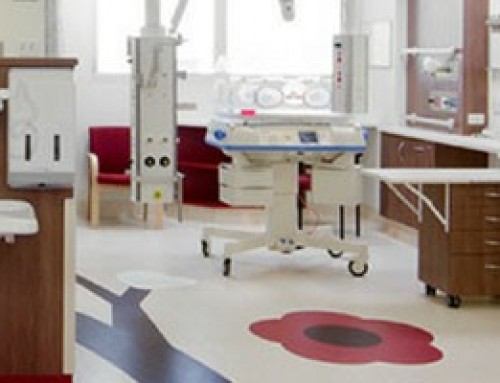Whether its blood bags, IV tubes, bed covers or even the floors, vinyl is the material of choice when it comes to our healthcare institutions. We are so surrounded by vinyl medical products, and we don’t even think twice about them. They assist and support medical processes, provide sustainable and cost-efficient options, and are an easily disinfected material that hospitals can trust. With all of this in mind, it’s basically impossible to imagine a hospital without vinyl.
IV Bags and Tubes:

Photo Courtesy of Vinylinfo.org.
Since vinyl is a non-corroding material that is resistant to high electrical voltage and radiation, it is the perfect material for holding pharmaceuticals and blood for long periods of time.
Using vinyl bags allows health care professionals to keep blood fresh for longer; meaning that blood that is donated is able to save more lives.
Vinyl is the choice material for IV tubing because it is resistant to kinks, which is a crucial factor that can ensure that the contents of the IV bag are uninterrupted.
Vinyl Flooring:

Photo Courtesy of Gerflor.
Vinyl is often the flooring of choice in high-traffic institutions because it is durable and it provides a more quiet and comfortable atmosphere, but it is even more popular in hospitals because it is so easily sterilized. Gerflor creates sustainable and high-quality vinyl flooring that is perfect for healthcare settings. Without this hygienic and eco-friendly option, hospital traffic would be way louder, as well as more likely to pass along germs and bacteria.
Vinyl Bed Coverings:
In the past, hospitals have opted in for cloth linens for bedding and other textiles in healthcare. Some of these kinds of linens are single-use, which can begin to get pricey and are not the most sustainable option. Vintex has developed Vintex V-Care® Launderable Reusable Barrier Fabrics, which can stand up to commercial laundering, and are a more sanitary material. Vinyl can be steam sterilized which makes it safer to use in hospitals. This vinyl-fused fabric has all kinds of applications, like pillowcases, cart covers, laundry bags, bibs, pressure cuffs, and therapy devices.
Imagining a hospital without vinyl products looks way less efficient and a little less sterile. We’re not saying that it’s completely impossible for a hospital to go on without vinyl, but with the sterilization, durability, flexibility, and reliability of this material, who would want to?








